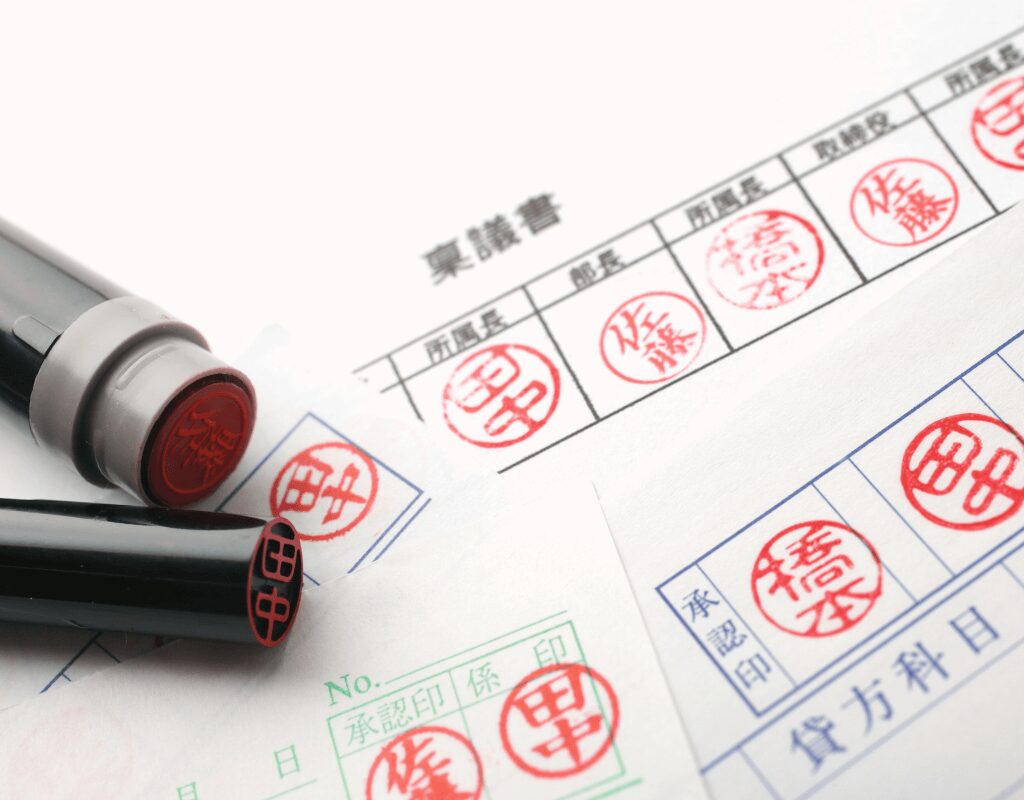1K
In many countries, personal seals aren’t commonly used. Instead, people rely on signatures or digital methods. But in Japan, even with the rise of electronic systems, inkan (personal seals) are still widely used in everyday life and official paperwork. This might surprise some people. In this article, we will explain the different types of inkan and how they are used in Japan.
If you’re interested in exploring other guides in Japan, please take a look below.
In many countries, people use signatures. However, in Japan, personal seals (inkan or hanko) are often required instead. There are three different types of inkan used depending on the situation.
A jitsuin is a personal seal that is officially registered at your local city or ward office. After registering your seal, you will receive an inkan registration card. Based on this registration, you can also get a seal certificate (inkan-shomeisho) from the office. You will need a jitsuin for the following situations:

A ginkōin is a personal seal registered with a financial institution, such as a bank or credit union. It is used for banking-related procedures, including:

A mitomein is a personal seal that is not registered, and it’s used in many everyday situations. Common uses include:
These types of seals are often sold at stationery stores or convenience stores in Japan. Many people use seals made by the company Shachihata, so it’s common to hear people say, “Please stamp it with a Shachihata.

When creating a jitsuin (registered seal), it’s important to follow certain rules to avoid mistakes. Foreign residents can also make and register a jitsuin, but understanding the rules is key to ensuring the seal is valid. Since a jitsuin can cost around 10,000 yen, it’s best not to waste money by making an incorrect seal.
Seals that can be registered:
Seal with full name:
ITABASHI MARSHA RACHADA
Seal without middle name:
ITABASHI MARSHA
Seal with only last name:
ITABASHI
Seal with only first name:
MARSHA
Seal with last name and middle name:
ITABASHI RACHADA
Seal with first name and middle name:
MARSHA RACHADA
Seal with initials:
I.M.R
(Initials can also exclude the middle name.)
(Note: Seals should clearly show the combination of last name, first name, and (middle name) using periods or separators.)
If you are from a country that uses Kanji, you can have your Kanji name on your resident record. Because of this, you cannot register a seal with your name in Katakana.
To register a Kanji seal, your Kanji name must already be on your resident record. If it’s not there, you can apply at the Immigration Services Agency to have your Kanji name added to your residence card. Once added, your Kanji name will appear on your resident record.
Example:
If your resident record has this name, you can register the following seals: Full name: 張 長春 (or 张 长春 on your passport)
Seals that can be registered:
You will be able to purchase English Inkan at following places.
Source: 2024 印鑑うんちく事典
Source: ITABASHI CITY OFFICE